What’s the best way to make money coding? How soon can you earn income with your programming skills?
How can a programmer make extra money? How much can you earn coding from home?
If you’re interested in learning coding to start a new career, congratulations!
Learning how to code is one of the most profitable skills you can teach yourself.
If you enjoy coding and are not making money online, you are missing out big.
The job market is booming and there’s a high demand for skilled developers worldwide.
Even if you are new to tech and know HTML and CSS, you can monetize your skills.
If you learn popular programming languages like JavaScript, Python, Java, or PHP, you can offer your skills online and start earning money coding.
The best part?
You can find work opportunities everywhere. Online and offline, in your area and globally, too.
And thanks to the growing demand, the average salaries for web developers and most tech jobs are very lucrative.
To help you get started, I’ll show you the best ways to make money coding in this article.
I’ll walk you through the fundamentals of earning money with tech skills, passive income ideas for programmers, and smart tips to get paid to code.
Whether you’re a beginner or an intermediate developer, you will find helpful tips to earn money by coding and boost your income with your tech skills this year.
Let’s dive right in!
Please note: This post contains affiliate links to products I use and recommend. I may receive a small commission if you purchase through one of my links, at no additional cost to you. Thank you for your support!
Introduction: Making money coding from home
Before we discuss the different money-making methods, let’s look at a couple fundamental questions:
What is the best way to make money coding?
First, whichever method you decide to focus on, always pick something you genuinely love doing.
It’s much easier to stay motivated when you’re enjoying what you do.
Unlike most jobs out there, these opportunities give you the absolute freedom to decide what to do and when to do it.
Second, everything you do online is scalable.
Whether you offer tutorials, write blog posts, create online courses, or sell plugins or software, your income compounds with time.
As more people find your content online, your chances of making a sale increase.
Third, remember that none of these methods is a get-rich-quick scheme.
They all require a lot of hard work until you can pay your bills with coding.
With that said, always think long-term.
Plan out your work well in advance.
Set yourself clear milestones for along the way. This will help you maintain your focus because you will know exactly what to do next to achieve your goals.

Is it easy to start making money as a developer?
Since there are so many different tools you can learn, there is no straightforward answer to this question.
It all depends on what you wish to learn and achieve by learning tech skills.
You can learn some tools in a matter of days and start making money right away.
But with most programming languages, you need more time to become proficient enough to start making money as a programmer.
For instance, if you’re interested in learning front-end web development, you could start with your first mini jobs in just a couple of weeks. Or even sooner.
On the other hand, if you choose to specialize in data analysis and machine learning, you will need more time to gain enough confidence to start working and earning your first bucks.
But all in all, the best part of coding and web development is that it’s a skill you can learn by yourself and set your own pace with it.
You don’t need a college degree or years of experience.
Start by learning the basics of one programming language.
After that, it’s time to start practising on small, real-world projects of your own.
Make money coding: Table of contents
Here are 12 money making methods to monetize your coding skills:
- Method 1: Freelancing
- Method 2: Full-time job
- Method 3: Tech entrepreneurship
- Method 4: Mobile applications
- Method 5: Blogging
- Method 6: WordPress themes and plugins
- Method 7: Scripts and software
- Method 8: YouTube channel
- Method 9: Coding course
- Method 10: Programming tutorials
- Method 11: E-books
- Method 12: Work for local businesses
- What’s the best way for you to make money coding?
- Where should you start to make money coding?
- 7 tips for making money coding from home
- FAQ: How to make money coding?
Share this guide with others and pin it for later!
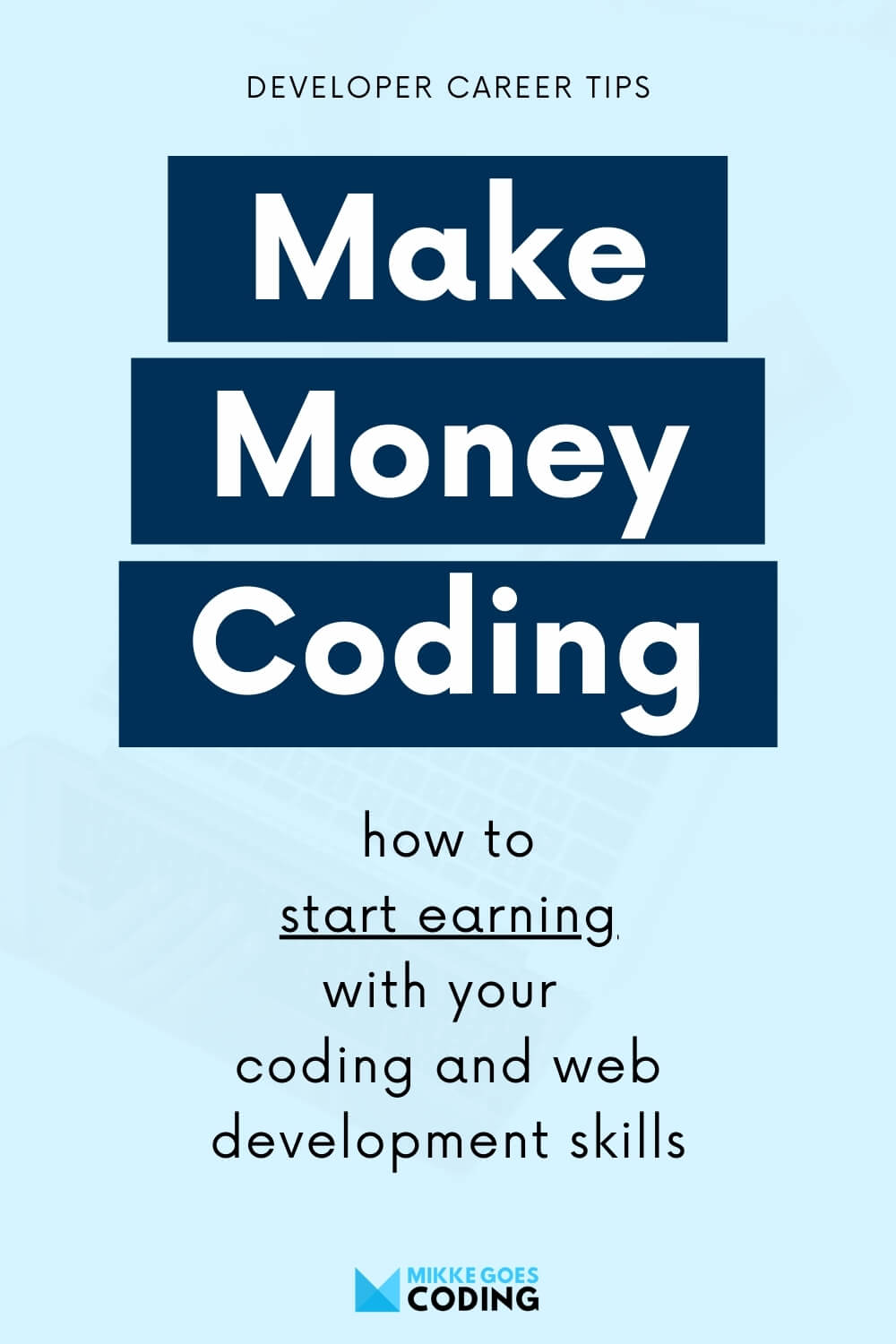
1: Freelancing
I’m a huge fan of freelance work, both online and offline.
You can decide which projects to take on, how much you work, and where to work.
The best part?
You can earn money freelancing while learning to code or even working a full-time job.
Even with just relatively little coding experience, you can start looking for small jobs to practice your skills, create new contacts, and earn a little cash on the side.
As your skills improve and your confidence grows, you can take on more demanding jobs.
You decide how many gigs you accept. If you want to become a full-time tech freelancer, nothing’s stopping you from doing that.
In fact, that is what I did back in 2017.
I never studied web development or worked in tech.
But when I started learning to code in 2016, I knew I wanted to help others with my knowledge.
With a lot of hard work, I became a full-time freelance web developer.
It gave me the freedom to work whenever, wherever. It’s definitely been one of the best decisions I’ve made in my life and one of the best money making methods for techies.

How much money can I make freelancing online?
The average freelance web developer salary is $83,156 annually in the US.
Here are a few hourly rate examples for freelance web developers:
- Basic one-page web development: $15–40+ per hour
- CSM code customization (WordPress): $30–75+ per hour
- Full custom website coding: $75–150+ per hour
However, that’s not where you will start.
Your hourly rate will be very low in the beginning.
This is because you are still learning.
In other words: you are getting paid to learn and practice new skills.
Hence, I recommend seeing your first freelance gigs as paid practice. You’re not an experienced freelancer yet, so you can’t charge a full rate yet.
Any experience you get now is incredibly valuable for your future.
Every little job you get helps you build a solid portfolio. That is your key to getting bigger, better-paid jobs in the future.
If you put in the “cheap” hours now, you can charge much more for your work in the future.
As your skills improve, you will not only know more about the technical part of freelancing. You will also gain valuable experience for communicating with clients and managing your projects.
For more details, head over to my article on how I made my first $1,000 freelancing online.
In the long run, there really is no limit to how much money you can make freelancing.
It all depends on how much you’re willing to work. When your freelancing business takes off, you need to start turning down projects.
Your income will also fluctuate a lot.
For instance, if you build websites, you’ll probably see a summer slump, when people aren’t in the office.
Come September and you’ll see an upward trend again.

How can I start freelancing as a programmer?
First, decide what you want to build for your clients.
If you love working with HTML and CSS, you should apply for front-end web developer gigs.
If you’re good at Python, you can find tons of interesting jobs in back-end development, data analysis, or even machine learning.
The very first thing you should do is to go online.
Start by updating (or creating!) your LinkedIn profile. Do that right now.
Second, look for work among the people around you: friends, family, relatives, colleagues, people you see daily at the coffee shop, supermarket, or hair salon.
Do any of them need help with creating or updating their website?
If it’s difficult to find work locally, don’t hesitate to explore freelance job opportunities online.
What skills do I need to start freelancing?
Which programming languages and technologies should you learn to become a freelance developer?
You need to know what you want to build before you can choose the right programming language to learn.
You must know what types of projects you want to work on.
Otherwise, you may end up spending weeks and months learning a language you can’t use for the type of work you enjoy.
Here are five in-demand tech freelance skillsets to make money coding:
- WordPress web development:
WordPress powers over 40% of all websites worldwide. The demand for freelance WordPress specialists is extremely high. To build WordPress websites for clients, learn HTML, CSS, JavaScript and PHP. - Front-end web development:
Front-end developers are responsible for the “visible” part of a web project, i.e. the front-end or client-side. To become a freelance front-end developer, learn HTML, CSS, and JavaScript. - Back-end web development:
Back-end developers are responsible for the server-side programming. They develop the “logic” for storing and processing data. To become a freelance back-end developer, learn PHP, Python, Ruby, or Java. - Mobile app development:
For iOS mobile app development, learn Swift and Objective-C. For Android development, learn Java. - Data analysis and data science:
Data analysis, data science, machine learning, and artificial intelligence are all based on analyzing big data. To become a freelance data specialist, learn Python.
How to start freelancing as a beginner programmer online?
There are a number of websites where you can sign up as a freelancer.
Online freelancing platforms allow you to reach a bigger audience than your local social circle.
I landed my first small coding jobs through the Upwork freelancing platform.

Back then, I was entirely new to freelancing and wanted to validate my skills and build up my confidence.
When I started learning to code, I didn’t even think about making money with it. At least not anytime soon.
I thought I needed a college degree and years of experience to be taken seriously.
Also, it seemed like a very distant thought to get paid for doing something I really loved and enjoyed. I mean, I was learning coding simply because it was so much fun.
But one day, a work colleague told me to go online and see what I could find. I came across Upwork, read some positive reviews, and signed up.
First, I did some basic HTML and CSS jobs for $10–30.
But after a while, I started charging ten times as much. It was pretty good considering I was only doing it occasionally.
When I got my first $3,000 job just 3 months in, I couldn’t believe what was happening. Not too bad for a beginner!
How to find freelance tech jobs online? 6 smart tips
Here are 6 freelancing tips on how to make money online as a developer:
Tip 1: Choose one platform and stick with it
Getting freelance work online is strongly based on reviews.
Having positive reviews from past clients increases your chances of landing a job. It’s the best social proof that makes your profile seem legit.
When you do a good job for a client, they can write a short review that is visible on your profile page.
When new clients see positive reviews on your page, they are more likely to hire you.
Hence, you want to gather as many reviews on your profile as possible.
To do this, focus on a single freelancing platform.
Check out these popular freelancing platforms to get started:
Each of them has a slightly different setup. Go through their payment terms and see what people are saying about them.
Don’t spend too much time choosing one.
If you’re not sure, just go with Upwork. I had a very positive experience with them and there are tons of beginner-level coding gigs available.
Tip 2: Create your profile
When you are new to freelancing and coding, I know you can’t boast with years of experience and high-profile portfolio projects.
But don’t worry. That doesn’t mean you should leave your profile empty.
Here are a few tips to create an Upwork profile that gets you hired:
- Upload your photo
- Add a video introduction
- Add your language skills
- Add your education details
- Write a value-driven profile title
- Add a profile bio text
- Showcase work samples in your portfolio
- List your tech skills
- Choose your experience level
- Add your employment history
- List any certifications
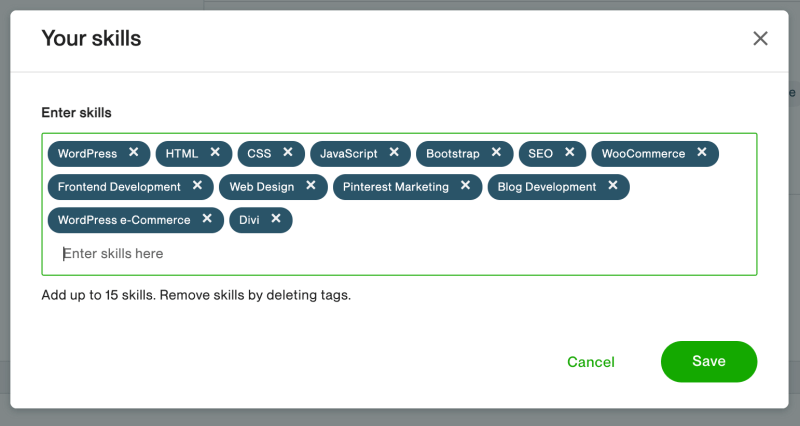
Tip 3: Find the right jobs
Once your profile is set up, start browsing through beginner-level job openings:
- What skills do they list as requirements?
- Can you find any matches with yours?
If you feel like you’re not ready to apply for small jobs yet, simply improve your skills in relevant areas based on your research.
Once you feel confident enough, it’s time to start applying for your first jobs!
Tip 4: Keep your bids low in the beginning
Your first freelance jobs are primarily for learning.
Explain why you are willing to work for a low price, e.g. tell your clients you’re just starting out and are more interested in doing a great job in exchange for a positive review.

Tip 5: Don’t take on big projects
Start very small, don’t be too ambitious.
It’s better to go for the easiest jobs first to gain confidence in your skills.
You don’t want to have to tell your client that you can’t finish the job. That’s going to leave a bad taste in your mouth, too. It’s definitely not good for your confidence.
Right now, you simply want the easiest job possible.
Remember: you want that first positive review for your profile page.
Tip 6: Be honest and direct
Only list your real skills on your profile, even if it’s just basic HTML and CSS at this point.
If you get a job offer for a project that’s too demanding, learn how to say “no” right from the beginning.
Be confident in your skills from day 1. Don’t underestimate yourself.
Also, clarify the job requirements with your client up front. Make sure you both understand the expectations, milestones, and deadlines.
If you run into a problem or a disagreement with your client, you can turn to the platform to clarify any issues. A detailed list of requirements in the chat history will help solve the problem very easily.
What is the fastest way to start freelancing?
The quickest way to start freelancing online is to learn HTML and CSS.
Both languages are easy to learn, insanely popular, and in high demand on the freelance job market.
If you plan to become a front-end developer in the future, you can start making money in a matter of days or weeks.
The most simple jobs for freelancers online are usually something like fixing broken links, adjusting CSS for some styling, or adding some new content to a website.
As soon as you feel confident in your skills, just go for it.
Set up a professional-looking profile on Upwork. List your skills and let your personality shine through in your profile bio.
Then, start bidding for a few projects. Only target very small, easy gigs at this point.
Keep your rates low. Explain that you are offering low rates because you want your first reviews.
Respond to potential clients promptly and clearly.
If you want to learn more about getting started with freelancing, grab your copy of my popular guide on how to make your first $100 from small freelance jobs.

2: Full-time job
Feeling like climbing the corporate ladder?
In that case, you could consider learning coding to get a full-time developer job in the future.
Learn the necessary skills, build a stellar portfolio, and start applying for jobs.
Join a company you find interesting and see where you can go.
The job market for developers seems is booming – and it has for years already.
In the US alone, the employment for computer and IT occupations is estimated to grow 13% from 2016-2026 according to the Bureau of Labor Statistics. That is faster than the average for all occupations.
The demand for skilled developers is high and continues to grow.
What tech specializations can you learn and start a career with?
Let’s look at four popular entry-level specializations you can choose between:
- Front-end web development
- Back-end web development
- Mobile app development
- Data analysis and data science
#1: Front-end web development
Web developers create websites and web applications. If you want to earn money as a web developer, you can choose between front-end and back-end web development.
As a front-end developer, you are responsible for the visible parts of a website project.
Front-end developers create everything that the user can see and interact with.
They work closely with graphic designers and product designers. It is your job as a front-end developer to code the website to look the way the designers intended.
What skills do front-end web developers need?
For an entry-level job, you will need to learn three languages:
- HTML (HyperText Markup Language) to create the actual content like text, images, links, etc.
- CSS (Cascading Style Sheets) to style and design the content created with HTML
- JavaScript to add interactivity and dynamic features to a website
Learning three languages for an entry-level job may feel a bit daunting.
However, you can easily learn the basics of HTML and CSS in just days or a couple of weeks.
Learning how to master JavaScript will take longer.
But you will continue to practice your HTML and CSS skills along the way, since these three languages work seamlessly together.
How much does a junior front-end developer make?
According to Glassdoor, the average salary for an entry-level front-end web developer is $81,135 annually in the US.
For more details, read my guide on how much front-end web developers make.

#2: Back-end web development
Back-end web developers create everything that is not visible to the end users on a website.
They create and code the programs for storing and processing data from users.
Features like logging in, creating user profiles, messaging, or uploading files are all created by back end web developers.
Back-end developers need to work closely with front-end developers to make sure the website has all the required features and works smoothly.
What skills do back-end web developers need?
Here are a few popular back-end programming languages:
- Python is a very powerful, versatile, and beginner-friendly programming language.
- PHP is a server-side programming language used by nearly 80% of all websites, including all WordPress-powered websites.
- Ruby is a popular language for creating web applications, especially in startups; easy to pick up and yet very powerful.
- SQL is a language for managing databases.

How much does an entry-level back-end developer make?
According to Glassdoor, the average salary for an entry-level back-end web developer is $84,900 annually in the US.
#3: Mobile application development
Mobile developers build applications that run on mobile devices, like cell phones and tablets.
The challenge in this field is to create a user-friendly and intuitive functionality with the smaller screen size and without a proper keyboard.
Most mobile developers build their apps for two of the biggest app stores:
- Apple App Store is the home for the apps for all iOS devices (iPhones, iPads)
- Google Play Store hosts all the apps for devices running the Android operating system
If you wish to build apps for iOS devices, you need to learn two programming languages: Objective-C and Swift.
For app development for Android devices, you would learn Java.
Even though the market for mobile apps is not booming like it was a few years back, there is still high demand for skilled and professional developers in this field.
How much does a Junior Mobile Application Developer make?
The average salary for an entry-level mobile app developer in the U.S. is $106,687, according to Glassdoor.

#4: Data analysis and data science
Data analysts and data scientists work with massive amounts of data, processing it to find insights that can bring value to their employer.
In general, data analysis is heavily focused on statistics and searching for patterns in the data.
Thanks to the growing popularity of machine learning and artificial intelligence, data science is one of the most financially lucrative skills you can learn.
There are tons of daily, practical applications for data-based insights, from Alexa to suggestions for movies you’d like to watch next on Netflix.
If you enjoy working with statistics and sifting through data to discover patterns and valuable insights, this could be your field.
What skills do data analysts and data scientists need?
Here are the most popular languages and technologies for data analysis and data science:
- Python
- R
- SQL
If you’re curious to learn more, the free Understanding Data Science course at DataCamp teaches you the very basic fundamentals.
How much does a junior data analyst and data scientist make?
According to Glassdoor, the average annual salary for an entry-level data analyst is $76,843 in the US.
The average annual salary for an entry-level data scientist is $129,055 in the US.
3: Tech entrepreneur
Start your own tech startup or coding business!
How many times have you thought to yourself, “there should be an app for this..”?
If you are into mobile development, you can start coding your own apps and become a tech entrepreneur.
Alternatively, if you have a great business idea and want to team up with other techies, you could launch your own tech startup.

Your idea doesn’t even have to be anything revolutionary. The most successful startups have an incredibly simple business idea.
All you need to do is to offer people a way to do things more easily or quickly by using technology.
One successful and viable startup idea is to create a web application.
Team up with backend and front-end developers and create a tool you believe in.
I chose this path as a developer and started my own web design business back in the day. And honestly, I’ve never looked back.
For more details about how I started learning coding, check out my post Learning to Code? This is What I Learned in 6 Months.
How to learn coding and become an entrepreneur?
If you want to become a tech entrepreneur, here’s how you can get started:
Step 1: Gather, research, and develop business ideas
Every successful company has one thing in common:
They bring value to their customers.
If you can find a way to help people with an everyday task or solve a problem for them, why not make a business out of it?
Make sure it’s something you know a lot about and enjoy spending time with.
Step 2: Research the current market and competition
Find out everything you can about the current market:
- Is there demand there?
- Who is your ideal customer?
- Who are your competitors?
- What are their strengths and weaknesses?
- How can you reach and target potential clients?
- Will you offer your product or service locally, nationally, or globally?
In the beginning, you might only offer one service locally.
As you learn more and become more confident in your skills, your portfolio will grow organically.
You can reach a bigger client base by offering a wider range of services or by extending your marketing beyond your local area.
Step 3: Figure out your unique selling point
Your unique selling point (or USP) sets you apart from your competition. It helps you stand out from everyone else on the market.
It’s the reason why your customers will choose you over all other providers.
For me, my USP was something as simple as a friendly and approachable image. I’m here to help my website clients to achieve their goals, not mine.
Also, I learned that most website clients struggle with managing an entire team of designers and developers.
To make their lives easier, I decided to offer a full-service package. I take care of the design, the development, and all communication. My clients only have one contact person and I take care of everything for them.
Don’t overthink you USP.
Most customers are willing to pay extra for simple solutions that make their lives easier.
Step 4: Craft a benefit-driven product or service
Based on everything you know so far, start refining your ideas.
Figure out whether you will offer a product or a service to your customers.
- Products require bigger investments up front. Once everything is set up properly, they scale well.
- Services can be offered with very little investments, as long as you have the right tools to manage your customer base.
Of course, starting your own business entails much more, but you get the idea.
It’s all about helping your future customers with a benefit-driven solution to a specific problem.
4: Mobile applications
We all have them on our phones, right?
It’s no secret that mobile apps are still in high demand.
The good news?
They aren’t that difficult to create.
In fact, you can even find software these days that take care of all the programming for you.
However, most of us prefer to code our apps from scratch.
Nevertheless, you’ll also need a good bunch of design and marketing skills to turn your app into a business.
Where should you start, then?
First, you need to decide which platform you want to target:
- Android devices (sell your apps on Google Play)
- iOS devices (sell your apps on App Store)
Both use different programming languages and technologies. Thus, you need to know what you want to build before you can learn the right skills.
Let’s take a quick look at both specializations:
Mobile apps for Android devices:
If you’re building and selling apps to Android users, Java is your #1 programming language to work with.
The best thing about Java is that it’s such a versatile language. It doesn’t restrict you to just mobile app development.
To get started right away, try these two learning resources:
- Beginning Android Development Track: This was my first Android dev course with Team Treehouse and I can’t recommend it enough. It’s perfect for absolute beginners.
- Android Development Tutorial: I’m a huge fan of Derek Banas’ YouTube channel, and this is just another one of his beginner-level videos you should definitely check out.
Mobile apps for iOS devices (iPhones and iPads):
If you want to target iOS users, you need to learn Swift and Objective-C.
If you are serious about getting your first app on its feet quickly, you can create a very basic iOS app within a few days.
Just remember that you need an Apple computer to create iOS apps. The development tools required only run on a Mac.
If you can’t get your hands on a Mac right now, use a PC instead and create apps for Android users.
Here are two courses to get started:
- iOS Tutorial: How To Make Your First App: In this free YouTube tutorial, Chris shows you how to program an iOS app from scratch. Super easy to follow!
- iOS 13 & Swift 5 – The Complete iOS App Development Bootcamp: This is one of the best-rated courses on Udemy, with over 50 hours of step-by-step video tutorials from the amazing Dr. Angela Yu.
What you should do next:
Once you’ve chosen your platform, it’s time for market research.
The best apps are simple. They solve a very specific problem for their users.
Here are a few questions to think about:
- Who is your target audience? (Be very specific)
- What’s their biggest problem?
- How can your app solve that problem?
Focus on a field you have experience in. The more you know about the topic, the easier it is to find pain points to solve with your app.
Keep your first app ideas simple and easy. Have fun with it and don’t bite off more than you can chew!
5: Blogging
I might be just a tad biased, but one of the best ways to make money coding is to start a tech blog.
Even if you just started learning how to code, you can share your experience with others who are just one step behind you.
If you’re familiar with web development basics and you know some HTML and CSS, you can build a basic blog website from scratch.
But an even faster way to get a coding blog on its feet is to use a Content Management System (or CMS).
WordPress is the most popular CMS worldwide with tons of powerful tools to help you create the best possible content you can.
I use WordPress for this blog, too, and I love it!
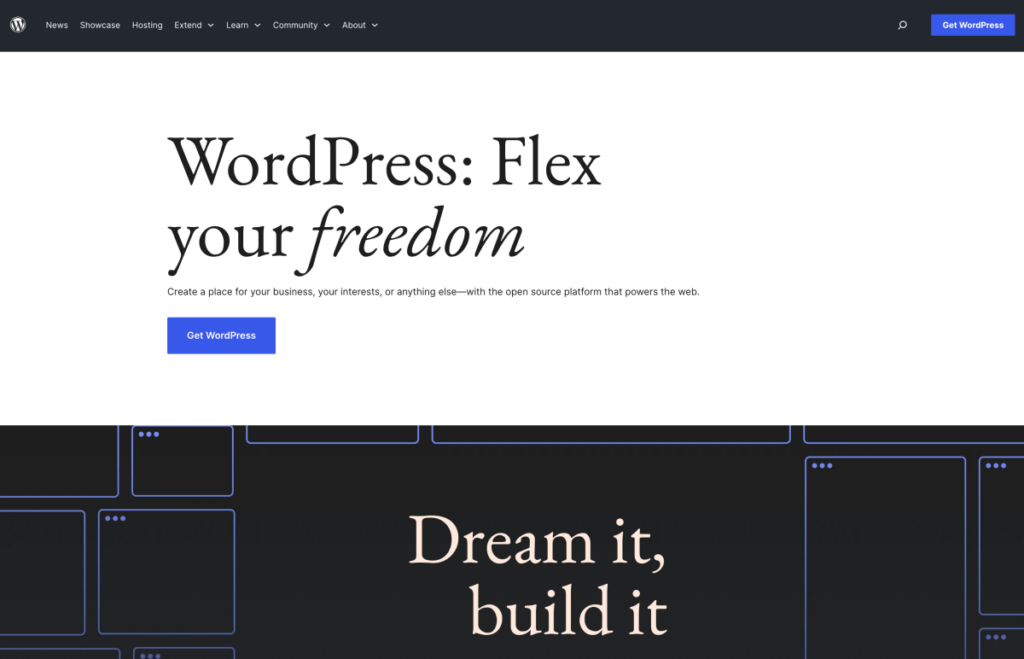
What can you blog about?
Choose a tech topic that you feel genuinely interested in.
You will spend a lot of time researching, creating content, and engaging with your readers. To make your life easier, pick a topic you love.
Choose a topic that’s very specific – a niche topic.
Niches are small, targeted fields that serve a specific target audience.
Niching down is the only way you can truly help you readers.
Plus, it’s easier to generate traffic through search engine optimization when your topic is narrow enough.
Here are a few niche examples:
- Front-end web development career tips
- Mobile app design tips for iOS applications
- Coding course platform reviews
- Career path tips for data science with Python
- JavaScript programming tutorials and hacks
- SQL tutorials for beginners
- Web app development tutorials for Python and Django
Your topic needs to be something people are already searching for online.
When you start writing SEO friendly blog posts with relevant keywords, your blog will generate free, organic traffic through Google.
The more in-depth, helpful content you publish, the more traffic you will see.
How can you make money with a coding blog?
Here are four ways to monetize your tech blog:
- Display ads:
Join a display ad network for bloggers and set up ads on your blog website. Every click and view will earn you 100% passive income. The income will be very small at first, but will grow once you get more traffic. - Affiliate marketing:
Why not recommend your favorite courses to your readers? Become an affiliate partner, link to your favorite course, and earn a commission every time someone purchases through your link. - Sell your own products:
Set up an e-commerce system with WooCommerce or Shopify, or sell digital products with SendOwl or Gumroad to make money with your coding skills. Write an ebook, design cheatsheets for popular programming languages, or offer 1-on-1 tutoring for an hourly rate. - Sponsored content and collaborations:
Once your blog generates more traffic, it becomes a lucrative platform for brands and companies to promote their products to your readers. You can easily make $1,000–2,000 per month from sponsored blog posts alone when you get 10,000+ monthly visitors. Check out this blogger rate card to see how much you can charge for sponsored content.
For more details on monetizing a blog, check out this post about how people make money blogging.

How to start a programming blog:
For a full tutorial, check out my guide on how to start a successful programming blog from scratch.
The best part about starting a tech blog to make money?
Low start-up costs.
You can start your tech blog for less than $50 for your first year.
Not too bad, considering you can make anything between $500 to $5,000 per month from blogging.
To get your programming blog on its feet quickly, you need to find a reliable web hosting provider.
I’ve been using Bluehost for most of my websites since 2016. Their setup is easy and their team is quick to respond to my questions.
Before you sign up, compare a few providers. You don’t need anything fancy at this point, though.
Go with a cheap shared hosting plan to save money. You can always upgrade in the future.
I recommend Bluehost, and I’ve gone the extra mile to negotiate a deal for you:
My readers have access to an exclusive discount with hosting plans starting at just $2.95 per month.

Again, you want to plan out your blog well in advance. The last thing you want is spend days and weeks creating content that doesn’t perform well.
As with all content online, your blog posts will perform best if they genuinely help your readers.
You need to find the pain points of your target audience and provide them with solutions to their problems.
For example, I blog about topics that are relevant to absolute coding beginners.
It’s my way of giving back to the community that once helped me start an entirely new career in tech. And I’ve never looked back.
Ready to start?
Head over to my guide on how to start a programming blog for a full step-by-step tutorial.
6: WordPress themes and plugins
If you want to make money coding from home, creating and selling useful WordPress themes and plugins is a lucrative option.
WordPress powers over 40% of all websites on the Internet. Needless to say, the demand for user-friendly, helpful themes and plugins is extremely high.
If you have experience in a specific industry, for example, figure out a simple plugin that helps websites in that industry to generate more visitors, leads, and revenue.
Or simply create a small plugin that makes it easier to use WordPress every day. If you’ve used WordPress for a while, you will probably have a few nifty ideas already.
The free version of your plugin should include the basic features.
Additionally, offer a premium version with even more tools that solve problems and help users save time, for example.
Here are a few platforms where you can sell WordPress themes and plugins:

7: Scripts and small software
Building a piece of software might sound intimidating. But if you keep it small, this way to make money programming is one of the best ones.
You can also sell helpful automation scripts that help people save time at work, for example.
How does it work, then?
First, you find a specific market that you like working with. The people working in that field will be your target audience, so it helps to know as much as you can about them.
Coding software is all about helping others by solving problems for them.
You want to find a specific issue you could solve for this target audience.
Most often, you already know a few pain points that people are struggling with.
Remember to find out more about your competitors, too.
Here are a few platforms for selling your scripts and code:
Don’t forget to work on your marketing skills! You need to know how to promote and sell your final product to the right audience.
8: YouTube channel
YouTube is one of the best platforms to make money coding by publishing video tutorials.
If you haven’t already, check out these top YouTube Channels to learn programming and web development this year.
Find something you’re really good at. Make sure it’s also something you genuinely enjoy teaching others.
Find out what beginners are struggling with in that area.
Then, record short videos of yourself solving those problems.
Your setup doesn’t have to be anything fancy.
You can simply record what you do on your screen and see how your viewers respond.
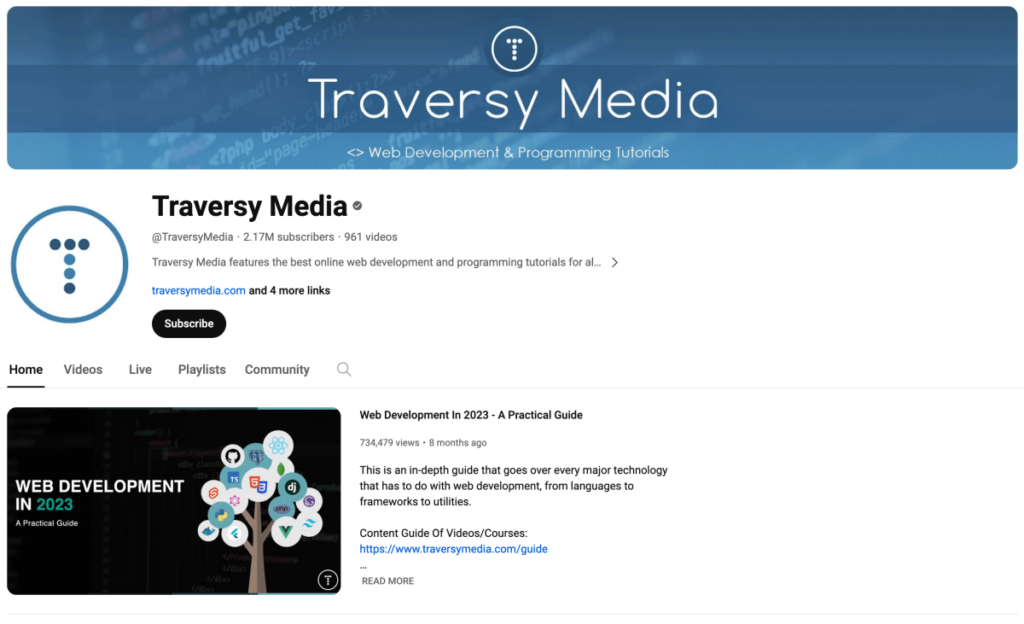
To make things easier for yourself, make a long-term plan for your YouTube channel:
- Figure out a logical learning path that you’ll guide your viewers along.
- Start with the basics, assuming your viewers no absolutely nothing about the topic.
- Proceed to more advanced topics like building practical projects with code.
Millions of people are learning programming online. Sadly, most online courses lack a guided learning experience using real-life projects. Focus on that!
Now, how can you make money on YouTube?
How to make money with programming skills on YouTube:
You can publish your videos on YouTube for free.
YouTube pays money to content creators for views.
The more views your videos attract, the higher your income will be.
To make money coding on YouTube, you have two options:
- Publish full tutorials on YouTube:
If YouTube is your main income source, publish full-length tutorials that cover everything your target audience needs to know. In-depth, high-quality videos keep people engaged and you will generate longer views with multiple ads and higher income. - Promote your main product on YouTube:
If you’re selling an online course, use YouTube as a promotion channel. Publish short videos where people can learn the basics. Drop a link to your course website so that people can find your in-depth tutorials, too.
9: Online coding courses
Coding and web development skills are in high demand around the world. The tech job market is growing much faster than the average for all industries.
The global e-learning market was worth $215 billion USD in 2021. It is forecast to reach almost $400 billion USD by 2026, and $645 billion USD by 2030.
Thus, we can expect to see a lot of demand for high-quality coding courses for years to come.
In other words:
Millions of people want to learn how to code!
If you are serious about making money with your coding skills, creating an online course is one of the most scalable strategies out there.
You can sell your course through an online learning platform like Udemy.
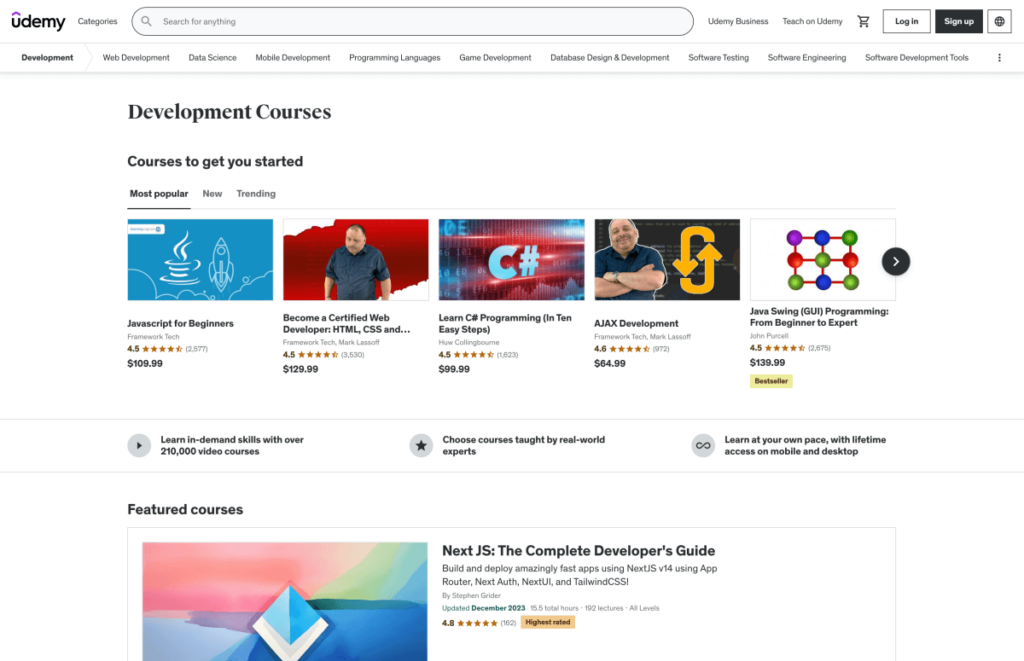
If you’re not familiar, Udemy is a massive e-learning platform with thousands of individual courses for learning anything you can imagine.
For more details, read my full Udemy review.
Teaching others what you know doesn’t require you to be the best programmer in the world.
You simply need to be one step ahead of someone to teach them what you know.
Of course, you should possess a solid skillset in the field you want to teach.
Also, you want to make sure you’re on par with your potential competitors.
Thus, if you love teaching others and you know how to explain complex topics to beginners, why not try it out?
How to make money creating online courses:
The best way to break through on massive online learning platforms is to focus on a specific niche.
Find an area of expertise, combine it with your tech skills, and see if there’s demand for a course like that.
When you’ve built your course curriculum, it’s time to produce your content.
To reach more potential students, set up a blog with some free tutorials to build some authority and traffic.
Then, send your visitors to your online course. If they liked your free tutorials, they are likely to purchase your course, too.
Once you’re all set up, the learning platform of your choice will take care of marketing and everything else.
Your course will earn you passive income, and you can start working on your next course already.
10: Online programming tutorials
If you don’t want to create a full-scale coding course, you can also monetize your tech skills by offering coding tutorials online.
After all, if you’re enjoying coding, why not teach others what you’ve learned?
What’s the best way to monetize coding tutorials, then?
Start by setting up your own website.
Sign up for web hosting and register a domain name.
I’ve negotiated a deal for my readers with Bluehost, starting at just $2.95 per month. You will even get a free domain name for a year.
Set up a clean and well-structured website.
If you want to build a full-scale coding tutorial website, you don’t need to code it from scratch.
Right now, you simply want your website up and running so that you can start selling your tutorials asap.
Use WordPress to get your website online today.
Structure your tutorials well. Pick a very narrow topic and plan an entire tutorial learning path. Each tutorial should cover a specific milestone for a bigger project.
In the beginning, it’s perfectly OK to simply record your screen while you work on simple projects.
Add a few comments, helpful tips, and a voiceover for extra guidance.
Ta-dah! You just created your first video tutorial!

How to make money with online programming tutorials:
What about the money? How do you make an income with tutorials?
You have a couple of options here:
- Make money with display ads:
Sign up with a display ad network and populate your tutorial videos with a few ads. Every time someone sees or clicks an ad, you’ll earn passive income. If you upload your videos to YouTube, you can monetize them easily with the Google AdSense display ad program. - Sell subscription plans or memberships:
Set up an online shop and restrict access to your tutorials to members only. Monetize your content by selling lifetime memberships or monthly subscriptions. - Create an online course:
If you don’t want to spend time on creating your own website, use a platform like Teachable or Skillshare to publish your tutorials as a course. They take care of most of the “boring” stuff, such as billing, which is a massive time-saver.
Creating a website for coding tutorials takes a lot of work.
But once everything is set up, you can focus on marketing and growing your traffic.
Slowly but surely, you should start seeing your income increase as your audience grows.
11: E-books
Similar to courses and tutorials, e-books allow you to sell your knowledge to anyone who’s one step behind you.
Pick a topic you enjoy researching and spending time with.
Here’s how you can create the perfect e-book:
- Know your target audience:
Figure out a problem your e-book solves. How does it make your readers’ lives easier? What’s in it for them? The better you know your target audience, the easier it is to pick a pain point your e-book helps them solve. - Map out your e-book contents and chapters:
Each chapter should represent a milestone along the way to the solution your e-book delivers. This will ensure that your e-book is easy to read and follow. - Cover the topic thoroughly:
Your e-book should be at least 10,000+ words long. That’s enough to explain and discuss a very narrow niche topic.
If you plan your e-book carefully and do your research well, it should take a few weeks or a few months to finish writing it. It depends on the length and depth of your topic.
When you finish writing and editing your e-book, make sure you let at least a few people read it before you start selling it.
Here are my recommended e-commerce tools for selling e-book products:
- SendOwl allows you to upload your e-book as a PDF and sell it worldwide.
- GumRoad is similar to SendOwl, but they charge commissions of up to 9%.
- WooCommerce is free e-commerce plugin for WordPress. If you own a WordPress website, extend it into an online shop with WooCommerce.

12: Work for local businesses
One of the easiest ways to find your first clients is to look in your area.
Go through your contacts and local shops and businesses. See if they have websites that are outdated, difficult to use, or even broken.
In general, small local businesses can’t afford a $10,000 website makeover. Instead, they’re interested in simple and affordable solutions.
As long as you can show them how your skills and solutions match their needs, they’re likely to hire you.
And it doesn’t need to be anything too big if you’re just a beginner. Simply offer a little facelift for their website, for example.
Once you get your foot in the door, that client will most likely contact you for future work.
With that said, keep in mind that your first gigs won’t pay too much.
But remember that you’re still learning. With each small project you finish, you’ll gain valuable experience in working with clients. And as a bonus, you’ll get a real-life project to showcase in your portfolio.
What’s the best way to make money programming for you?
Ok, you should have a nice overview of a few different ways to make money as a programmer.
The next step is to find one or more methods you feel most drawn to.
Remember that there is no best path for making money with programming.
You need to be aware of which methods align the best with how you work and what you know.
Here’s a short summary to help you combine your current skills and passion with programming:
- Writing skills:
If you love technical writing, start a programming blog or write e-books to sell online. - Speaking skills:
Good speakers often make great teachers. Start a YouTube channel with video tutorials or create an online course. - Teaching skills:
If you’re a good teacher, you’ll know how to help others learn. Build an online course or offer tutorials on your website. - Design skills:
Are colors, typography, and layouts your thing? If so, why not combine them with your coding skills and become a full-stack web dev freelancer? Alternatively, you could consider creating beautiful website themes or templates to sell. - Project management skills:
If you can hold all the strings firmly in your hands, consider building your own software. Alternatively, you can start your own small web development service business.
The bottom line is to find things you love and excel in. Pair them with your tech skills and you’re all set.
Oh and one more thing: focus your efforts on only one money-making method at first.
Make sure you establish a steady foothold with that before proceeding to the next one. Taking on too much too soon will just make you feel scattered and overwhelmed.
Stay focused, find your passion, and turn that into determination to keep going!
I want to make money coding. Where should I start?
So you’re ready to get started? Awesome, congrats!
To get started the right way, you need to get into the right mindset.
I see a lot of beginners overthink this. They just end up feeling too overwhelmed, setting unrealistic expectations for themselves.
But what it all boils down to is this:
Whatever method you choose to make money coding from home, you need to find the biggest pain point of your target audience.
As long as you can solve those problems, you’re a potential candidate for the job.

How I started making money coding from home
Let me quickly explain how I started making money with my tech skills a few years back:
I started making money coding with small freelance jobs on Upwork.
They were quick and easy HTML and CSS adjustments I finished in 1-2 hours each.
But to be honest, it was downright daunting to apply for those first gigs.
I had no professional tech experience, so I had zero confidence.
But I knew I had to start somewhere.
How did it turn out?
I landed my first small freelance jobs after a handful of applications. It took time, but it was worth it.
After a few months, I quit my job and started my own web development and web design business.
The best part?
I’ve never been short of work. I can choose my clients and decide when and where I work.
My job has given me the absolute freedom in life. I am my own boss and decide when I get out of bed, take a nap, or work remotely when I travel.
Sounds good?
Here’s how you can get started right now:
Step 1: Define your goals and your why
The first thing you need to figure out is your “why”:
- Why are you learning coding?
- What do you want to build in the future?
- What do you want to achieve in the long run?
Read my article on how to start learning to code from scratch. It will help you find your why and start your journey towards becoming a professional developer the right way.
Step 2: Make sure your skills are in demand
Learning what you love is one thing. But finding someone to pay you for helping them with your skills is a different thing.
And this is where most beginners get it wrong. They want to sell their skills instead of solutions.
They want to create supply without knowing if there’s demand in the market.
Let me explain:
For example, let’s say you’re learning Python. You love the language and you want to become a Python developer. And hey, nothing wrong with that – that’s a great goal!
But before you start planning your future career, what you should ask first is:
- Can I make money with this skill?
- Where can I find jobs?
- When will I be ready to apply for them?
If you want a full-time job, your chances for finding one depend on where you’re looking.
In some areas, you’ll find more jobs for Python skills than in others.
If you want to start freelancing, some skills are easier to monetize than others.
You’ll find much more job openings for front-end developers than for complex data science projects.
Thus, you can learn enough HTML and CSS to find your first jobs in a matter of weeks. But mastering large-scale data analysis with Python takes more time.
For more details, check out my guide on the best programming languages and skills for freelance developers.
Step 3: Create your portfolio website draft
When you know why you want to do this and you’re sure that there’s demand in the job market, you’re all set!
Now you need a portfolio website. You’ll use it to reach your target audience and promote your services to them.
Here are a few points to be mindful of when creating your portfolio site:
- Target audience and ideal clients:
Match the features and design to appeal to your target clients. - Core service or product:
Set a clear core offering that draws from your unique selling point (USP). - Secondary and complementary services:
Offer complementary services in the future to produce even more value to your clients. - Site structure and content:
Keep it simple. Draft some short text for your Homepage, About page, Contact page, and Services.
At first, it can be just a simple one-pager about you and what yo do.
As your skills improve, you can add more content that appeals to your target clients.
When you finish a project, add it to your portfolio to showcase your best skills.
You’ll find all the resources you need for setting up your website right here.
My first portfolio website was build around my core service of building simple but beautiful websites for small businesses and other freelancers.
Later, I added a couple of secondary services:
- Website care and maintenance plans
- Search engine optimization (SEO) for websites
- E-commerce solutions for SMEs
- Site speed optimization for WordPress websites
I tried to keep everything as clear and simple as possible.
The most important lesson I learned was: nobody cares about my skills per se.
Freelance clients don’t care which programming languages I know.
They want to see how you can help them and solve their problems.
Hence, don’t just list all the programming languages and tools you work with on your portfolio site. No one cares. The average client doesn’t know what they mean.
Instead, tell them how you can make their lives easier with the services you provide.

Step 4: Get web hosting and register a domain name
Now your portfolio website needs a web hosting plan and a domain name to go online.
You can pick a domain name based on your name, for example.
Make sure it’s professional and reflects who you are and what you do.
As for web hosting, there are hundreds of providers you can choose from. You want to look for:
- Reliable uptime (your website can’t be offline!)
- Easy and helpful support features
- Solid technical performance
I launch all my websites and new projects on Bluehost.com.
They have a quick and easy signup process, and you get a free domain when you sign up for hosting.
As a little bonus, I’ve negotiated an exclusive hosting package for you starting at just $2.95 per month (yep, that’s a shameless affiliate link).
Start with the Basic plan. It’s enough to get you started. If you need to, you can always upgrade.
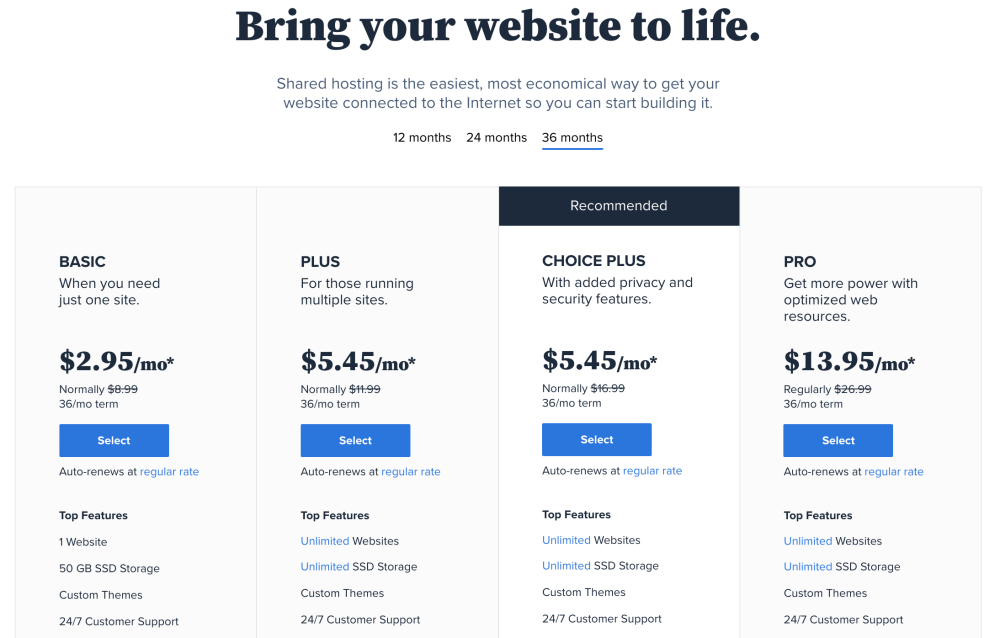
You need to pay for a minimum of 12 months up front. But the cost is still very cheap, $35.40 for an entire year.
Step 5: Create a homepage
When you’ve finished your signup and you’re logged in to your hosting admin area, you can create a homepage right away.
The quickest way to create your portfolio website is to use WordPress. It’s a powerful but easy-to-use content management system or CMS.
If you want to create your website from scratch, just write a few HTML and CSS files to get your homepage set up.
For a very basic website, start by writing a few paragraphs of content. Write a short bio about yourself and why you’re learning coding and web development.
Also, add a link to your LinkedIn or Twitter profiles! This helps your visitors find out more and connect with you.
Now upload your files to your web server:
If you’re using Bluehost, you’ll find a root folder on your hosting account called “public_html”. That’s where you can upload your HTML and CSS files via FTP. Just make sure you name your homepage file “index.html”.
For a step-by-step guide, check out my post on how to build a website from scratch.
Congratulations! You now have a portfolio page online!
Step 6: Start learning the right coding tools
Now that you have your portfolio all set up, it’s time to find the best resources to start learning coding.
Whenever you finish a small project of your own, upload it to your portfolio page for the world to see.
To get started, feel free to use free online courses to learn the basics.
Check out Codecademy or freeCodeCamp to get started.
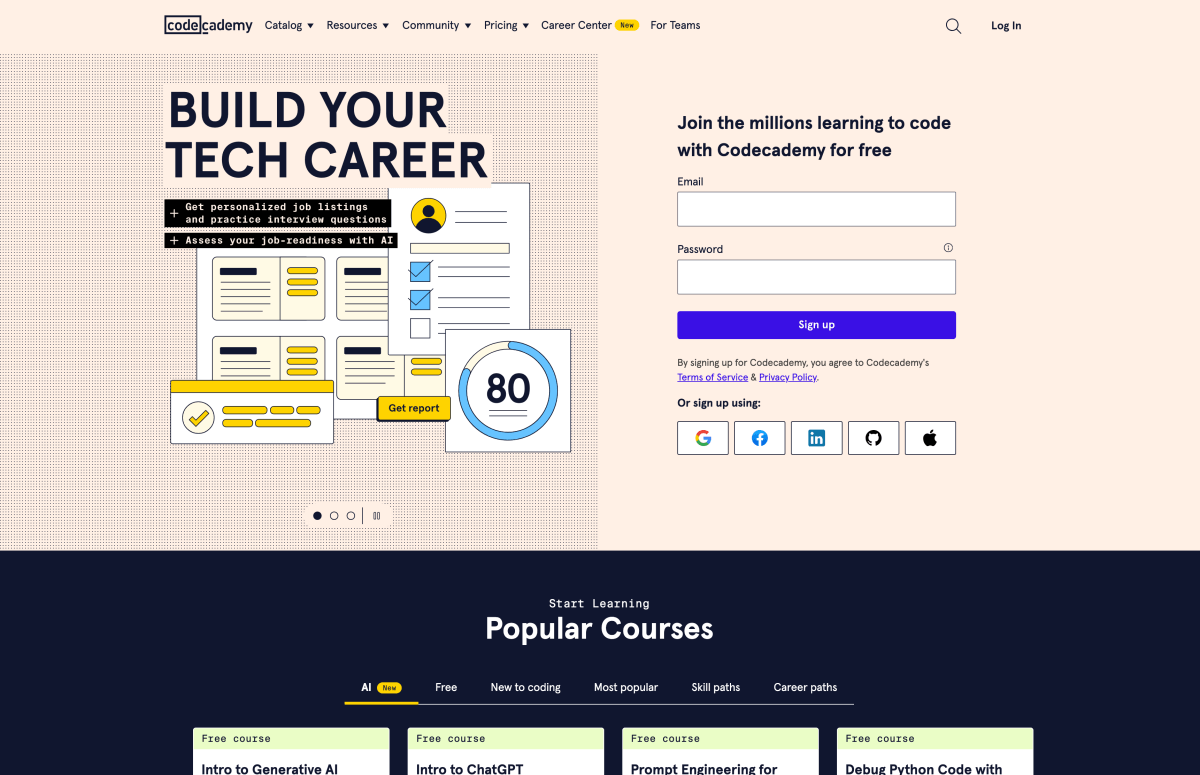
Try out a couple different programming languages to see which one you prefer working with.
Then, go through a beginner-level course to get more familiar with it.
Check out these free websites to learn coding for beginners to get started.
For more courses and tutorials, use these hand-picked web developer courses and books sorted by category:
These should get you well on your way!
If you have any questions about these courses, drop me a line in the comments below.
Step 7: Build projects for your portfolio
When you learn to code, build as many practical (and meaningful!) projects of your own as possible.
As you work your way through coding tutorials and exercises, take breaks to build something on your own.
See how comfortable you are with applying what you just learned to your own side projects.
If you need to use a cheatsheet as a reference, that’s perfectly OK.
But if you still need to follow a tutorial for every line of code you write, you need more practice.
The solution:
Build more projects!
You’ll find great ideas and inspiration in most coding courses and books.
However, the best side projects are the ones that help you solve a problem for yourself.
Think about how you could create a simple app or program that helps you in your daily life.
Here are a few things your own programs could do for you:
- Filter and sort emails automatically
- Rename and organize your files
- Generate reports at work
- Scrape the WWW for the most recent news stories on a specific topic
Here are a few helpful resources for building fun coding projects:
- Free guide: How to finish your coding projects faster (15 smart tips)
- 24 JavaScript projects for beginners (with source code)
- 30 Python project ideas (beginner + advanced level)
Remember: anything is possible with coding!
Start small and find solutions to problems by dividing them into smaller pieces. Setting up milestones helps you tackle bigger projects without feeling overwhelmed.
Then, finish one milestone at a time until you achieve your goal.
Once you have build a portfolio that showcases your skills, start applying for jobs!

7 tips for making money coding from home
By now, you may already be brainstorming ideas for monetizing your coding skills. That’s great!
To make your journey easier and smoother, here are a few smart tips for earning money coding from home:
Tip #1: Learn the right skills for YOU
Coding and tech are vast fields with tons of skills and specializations.
One person can only learn and know so much.
I see lots of beginners learn skills they will never need.
In fact, most beginners pick their first programming language based on what other people have told them.
After a few months, they realize that it’s not the right tool for the type of projects they want to work with.
To save time and make money faster, pick a specialization you enjoy. Do it now.
If you are a visual person and love designing beautiful web pages, learn front-end web development.
If you enjoy working with logic and rules, back-end development may be your thing.
If analyzing data feels exciting, learn data analysis skills.
Read more in my full guide on what programming language you should learn.
Tip #2: Be strategic about your projects
If you want to get hired fast, you need a professional-looking portfolio.
Your portfolio showcases your best work samples to potential clients and employers.
Needless to say, it should include relevant, targeted projects that your ideal client or employer finds interesting.
For example, let’s say you want to make money coding by building websites for restaurants.
When local restaurant owners visit your portfolio, they want to see beautiful restaurant website examples.
Summing it up:
Build projects that help you land your next job. Everything else is a waste of your time.

Tip #3: Learn to say “no”
When you start building your tech career, the last thing you want is to burn yourself out.
I see tons of beginner developers say “yes” to every work project they can get.
And I totally understand it. When the gigs start coming in, it’s hard to say “no”.
But you have to learn it.
Every project is like a small job. Every client is essentially your boss.
With 10 projects running simultaneously, it gets hard to keep track of everything. You will feel overwhelmed with emails, meetings, deadlines, and feedback.
Soon enough, the quality of your work will take a hit and your clients won’t be happy anymore.
So although it may not be easy, start practising saying “no” asap. You can thank me later.
Tip #4: Charge more than you feel is right
If you are new to tech and just starting out with making money from coding, I know you don’t want to scare off clients by charging too much.
But freelancers tend to undercharge for their skills.
Sure, part of it is because of imposter syndrome.
When you do what you love, you usually don’t see the value you deliver.
Plus, if you are just getting started, you may not even realize how much you know already.
If you are not sure what to charge, check how much your competitors charge in your area. You don’t have to match them, but you also shouldn’t sell yourself too cheap.
Tip #5: Ask for testimonials
The best way to sell your skills is word-of-mouth.
Happy clients spread the word about your services to people they know. There’s always someone who needs help with their website.
When they hear how you helped a client, they already trust you more than your competitors.
Getting testimonials and referrals increases your reach, saves you time on marketing, and generates better leads.
The best way to get positive testimonials?
Treat every client as if they were your only one.
When a client feels like they’re your #1 priority, they will be more than happy to tell others about your services, too.

Tip #6: Create multiple income streams
Making money coding is a vast field of different monetization opportunities.
You don’t need to limit yourself to just one monetization method.
In fact, I strongly advice against putting all your eggs in one basket.
The smarter way is to set up at least two income sources.
For example, if you freelance, that’s a great primary income source.
But freelancing is sometimes seasonal, and your income will fluctuate.
To balance things out, set up a passive income stream. Sell an e-book or promote affiliate products on your blog, for example.
Multiple income streams help you build an entire empire of tech-related side gigs.
A reliable passive income source allows you to take time off, too.
Tip #7: Take care of your taxes
Last but not least:
Stay on top of your taxes at all times.
Freelancers and self-employed techies receive their payments in full.
Hence, you need to take care of deductions for taxes, insurances, retirement, etc. when you get paid.
The last thing you want is an angry letter from the IRS about missing payments.
Luckily, financial stress is very easy to avoid.
Speak to a professional accountant before you embark on your freelance journey. It can save you a lot of stress.
FAQ: How to make money coding?
Yes, you can. To make money coding, you need to learn how to build something useful and meaningful with code. When your code solves a problem or answers a question, it delivers value. Whenever you provide value, you can expect companies to pay for it. You can learn the skills online using coding courses, tutorials, and bootcamps.
The average annual pay for computer programmers working from home is $64,974 annually in the US. That’s an average hourly rate of $31.24. Your income depends on how you monetize your coding skills. Freelancing, blogging, selling online courses, writing e-books, and offering paid tutorials have different expected income levels.
Yes, teenagers can make money coding, too. Check with your local authorities to make sure you follow all regulations. You can start a coding blog, take on freelance jobs, develop mobile apps, sell e-books, or offer online coding courses, for example.
Yes. When you are new to coding, you will start slow, but your earnings will ramp up quickly. Learning to code is still lucrative, with plenty of income opportunities: freelancing, blogging, selling your own e-books, producing online courses, and more.
Freelancing is the fastest way to make money coding if you are new to tech. You can apply for your first jobs with basic HTML and CSS knowledge, and increase your hourly rate as you gain experience. The best way to make money coding depends on your strengths: good writers earn money selling e-books and blogging, while good speakers make great online course instructors and mentors.
Final thoughts: How to make money coding
I hope you’re still with me – this was a long post! I hope you found a few ideas on how to make money coding from home.
Learning how to code is an insanely powerful way to acquire new skills you can use for a huge variety of jobs in the future.
The best part?
You can make money with your coding skills when you are still learning. You don’t need a degree. You don’t need years of experience. You don’t need to be the best developer out there.
You simply need to know how to solve people’s problems and answer their questions.
Learning the skills you need to make money programming doesn’t have to be expensive.
I invested between $20 to $30 in two courses on Udemy before I got my first online freelance jobs.
Not sure where to start learning? Check out my post with the best websites to learn programming and web development.
So when can you start making money coding then?
If you want a full-time job, I recommend freelancing while you are learning.
Working with clients gives you valuable experience that employers want to see.
Plus, by the time it’s time to apply for your first full-time job, you will have a portfolio with real-life projects to showcase your skills.
That’s what I did, too. So yes, I maybe a bit biased. Nevertheless, I soon landed bigger, better-paying jobs and became a full-time freelancer.
If you are ready to start today, steal my freelancing secrets and grab your copy of my popular $100 freelancing guide.

What are your plans for making money with coding? Share your thoughts and ideas in the comments below!
Happy coding!
– Mikke


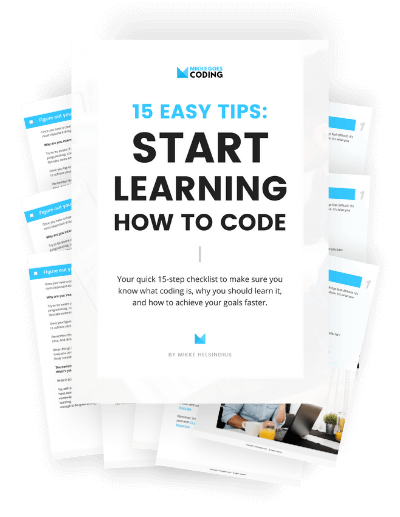
This article helped a lot and even I’m feeling now too motivated again.Thank you!
This was very helpful! Did you have to create a portfolio before applying for jobs on Upwork?
Hey thanks a lot.. I just spend an hour reading on your website.. I started since I am thinking of taking the treehouse techdegree or starting a coding bootcamp.
Just got motivated again to do some self learning on the side first before doing the huge investment. 🙂